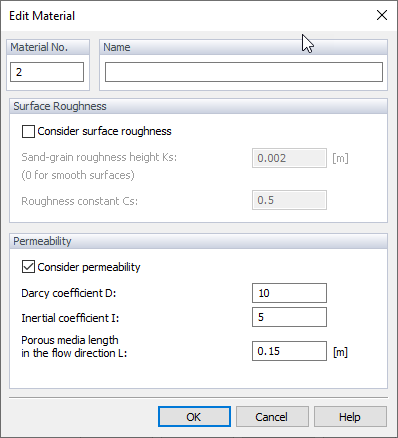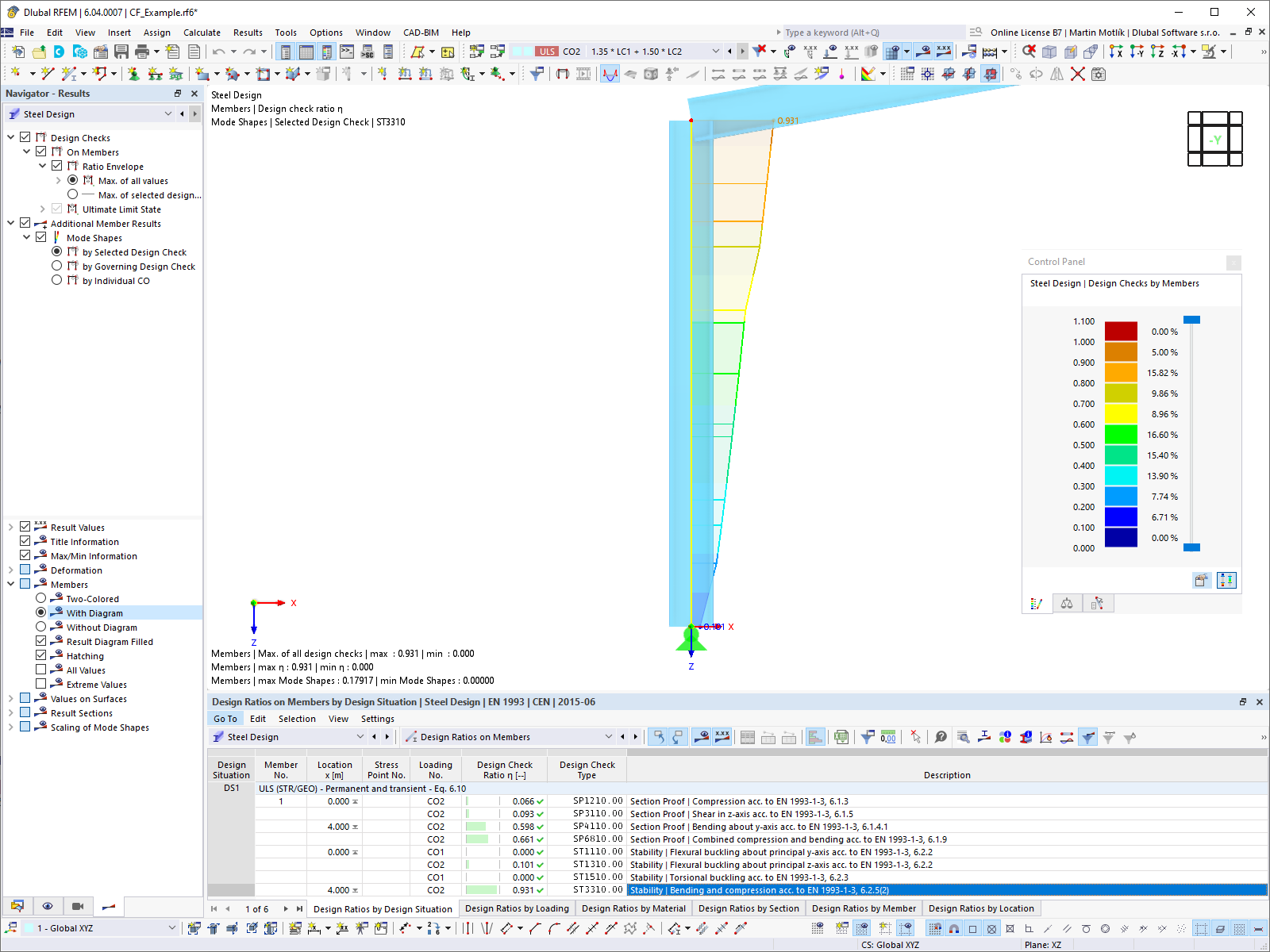En RWIND 3 Pro, es posible aplicar la permeabilidad a una superficie. A brief theory about the permeability can be found in Chapter Permeability. In RWIND 3 Pro, the permeability is modeled using a boundary condition, a prescribed pressure drop on defined surfaces. La caída de presión (gradiente de presión) está dada por la ecuación:
|
Δp[Pa] |
Pressure drop |
|
μ[Pa.s] |
Dynamic viscosity of the fluid |
|
U[m/s] |
Velocity of the fluid |
|
D[1/m2] |
Darcy coefficient |
|
I[1/m] |
Inertial coefficient |
|
ρ[kg/m3] |
Density of the fluid |
|
L[m] |
Permeable media length in the flow direction |
donde los coeficientes D e I se definen como:
In the permeable media models discussed in Chapter Permeability, a source term is added on the right side of the N‑S equations in the centroid of the cells where the permeability should be solved. Since RWIND 3 Pro only solves permeable surfaces (that is, relatively thin elements), the permeability is modeled using a cyclic boundary condition (porousBafflePressure) so far, prescribing the pressure gradient on the selected elements (patch). Para obtener más detalles, consulte la guía de OpenFOAM. Este es un modelo computacionalmente simple y se pueden lograr resultados interesantes en un corto tiempo de cálculo. Sin embargo, tiene sus limitaciones, por ejemplo, el uso del modelo para una caída de presión alta puede no conducir a la convergencia y a los resultados.
Puede encontrar información más específica sobre el modelo de permeabilidad (porousBafflePressure) en el manual OpenFOAM-4.1.
Permeabilidad y zonas
In RWIND 3 Pro, the permeability is assigned to the selected zones as a material property, see the image below.
En el cuadro de diálogo "Editar zona", en la sección "Material", haga clic en "Crear nuevo material..." o "Editar material...". Aparece un cuadro de diálogo con parámetros de permeabilidad.
Aquí, se deben definir los coeficientes de permeabilidad D, I y la longitud (espesor) de la superficie permeable L. An introduction on how to derive and obtain these coefficients was described in Chapter Permeability. More ideas and approaches to deriving the coefficients can also be found here:
Calculadora de Darcy-Forchheimer
One way to obtain the coefficient and model the permeability is described in the Knowledge Base Article on the Dlubal website.
Después de configurar todos los coeficientes y asignar zonas a las superficies, el modelo con superficies permeables está listo para el cálculo.


















Dlubal_KohlA_]_LI.jpg?mw=350&hash=21d94ec9a723c608496e9e95a21bb1309ab5067a)


























_1.jpg?mw=350&hash=ab2086621f4e50c8c8fb8f3c211a22bc246e0552)